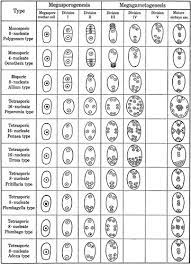RESPIRATORY SUBSTRATES - Energy Values, Examples, Definition
RESPIRATORY SUBSTRATES
The usual respiratory substrate is glucose. Some cells can
only respire glucose, such as brain neurones Other cells can oxidize lipids or
amino acids.
Definition:
Respiratory substrates are the organic nutrients oxidized at the time of respiration. At the time of cellular respiration, oxidation of organic nutrients occurs to obtain energy (ATP). The order of preference of organic nutrients as respiratory substrates are – Carbohydrates, Lipid, Proteins.
Lipids:
These are broken down to fatty acids and glycerol Fatty
acids are then broken into pairs of Carbon atoms As Acetyl CoA which enters the
Krebs cycle
Fatty acids:
These are then broken
into pairs of Carbon atoms As Acetyl CoA which enters the Krebs cycle The more
hydrogens the more NAD reduced can be made This will form ATP in oxidative
phosphorylation
One molecule of stearic acid will yield 147 ATP
Most of the energy from respiration is from oxidation of
hydrogen to water The more hydrogens there are, the more energy can be released
Fatty-acids therefore have a high energy value per unit mass
Glycerol:
It can be phosphorylated to and finally incorporated into
glycolysis One molecule of glycerol will yield 19ATP
Proteins:
These are hydrolysed to amino-acids These are deaminated to
remove the amino group or transaminated to transfer the amino group to another
molecule
The hydrocarbon skeleton is then converted to pyruvate or
Acetyl CoA which will enter the Krebs cycle
Energy Values of Substrates:
These are found using a Calorimeter A known mass of the substrate is burnt completely in the presence of oxygen The energy given off as heat is used to raise the temperature of a known volume of water. The energy value per unit mass of the substrate can be found using the Specific Heat Capacity of water The energy values of Substrates are: Carbohydrates – 15.8 KJg-1 Lipids – 39.4 KJg-1 Protein – 17.0 KJg-1.
Example of respiratory substrates:
Triglycerides are hydrolysed to glycerol and fatty acids,
glycerol is converted into pyruvate, fatty acids to acetyl groups. These then
are picked by CoA producing acetyl CoA. First, proteins must be hydrolysed to
amino acids and then should be deaminated before it is converted into pyruvate.





Comments